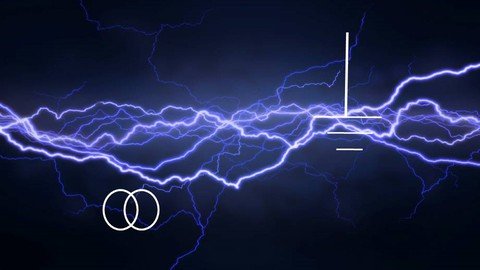
Free Download Substation Grounding
Published 11/2023
MP4 | Video: h264, 1920x1080 | Audio: AAC, 44.1 KHz
Language: English | Size: 880.68 MB | Duration: 2h 21m
Learn all practical and theoretical aspects of substation grounding
What you'll learn
Know where the ground fault current flows back to
understand the principles of touch and step potentials
learn how to design a substation grounding grid
understand why we install a grounding mesh below the substation
See how we ground various primary plant
Understand how an electrical fault affects the system currents and voltages
Learn how to size the grounding conductor based on the current magnitude and duration of the fault
Learn what is meant by ground potential rise or GPR
Find out how to calculate the grid resistance
Learn all of the important IEEE80 calculations
Requirements
None
Description
Substation grounding is one of the most important elements of substation, as it keeps personnel and equipment safe during an electrical fault.In this course you will learn all about the practical aspects of grounding and how we connect all of the common equipments inside a substation to the grounding grid.We will look at how grounding currents are affected by the transformers in the network and the configuration of the circuit breakers, both of which will allow you to define the magnitude of the ground fault for any configuration that you may come across.It is critical that safety permits are applied in the correct sequence and we will learn how they are implemented in a way which ensures that the personnel are safe during this complex procedureDuring a ground fault the substation fence can be the most dangerous element in the substation and we look in detail how we can make it safe for personnel working inside the area.Selecting the correct size of copper bar for the grounding system is key to the long term design of the substation grounding grid and will show the calculations that will allow you to do this.When a fault occurs inside the substation the ground beneath the substation will rise to an elevated level which can cause significant issues for the remote end substations, we will look at this issue in detail and show you how to avoid these problems on your network.We will then go into the more theoretical aspects of grounding and calculate the grid resistance value, the tolerable touch and step voltages, the grid current, ground potential rise and finally the actual touch and step voltages.
Overview
Section 1: Substation grounding
Lecture 1 Electrical Faults
Lecture 2 Substation Grounding Part 1
Lecture 3 Substation Grounding Part 2
Lecture 4 Substation Grounding Part 3
Lecture 5 Substation Grounding Part 4
Lecture 6 Substation Grounding Part 5
Lecture 7 Grounding Equipment
Lecture 8 Grounding Calculations part 1
Lecture 9 Grounding Calculations part 2
Lecture 10 Grounding Calculations part 3
Lecture 11 Grounding Calculations part 4
Lecture 12 Grounding Calculations part 5
Everyone who wants to learn about substation grounding systems
Homepage
Recommend Download Link Hight Speed | Please Say Thanks Keep Topic Live
No Password - Links are Interchangeable






